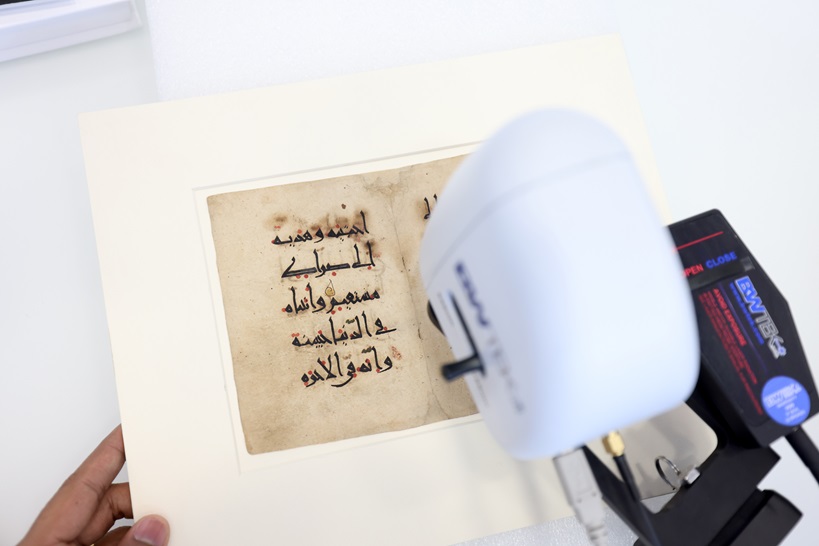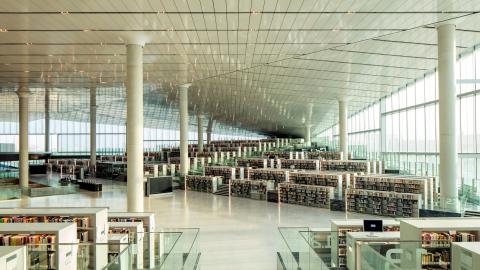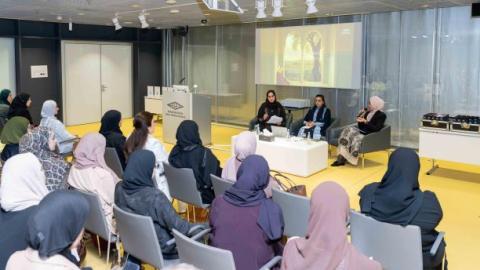
Qatar National Library (QNL) and Hamad Bin Khalifa University’s Qatar Environment and Energy Research Institute (QEERI) have signed a collaborative research agreement to create a methodology that conservators worldwide can leverage to protect Islamic manuscripts against degradation, positioning Qatar as a pioneer in Islamic manuscript preservation.
The project falls in line with Qatar Foundation’s multiversity approach, enhancing understanding of historical ink, pigment production, and the trading routes for rare pigments that were in use from the 10th century CE onwards. Its impact will also extend to historians and codicologists, fostering new partnerships and networks, primarily in Asian countries such as Iran, Malaysia and Indonesia.
Under the project, the Library’s scientific laboratory and QEERI’s Corrosion Center will unite to conduct experiments and develop new methodologies to stabilize inks and metal-containing pigments used in old Islamic illuminated manuscripts.
The unstable iron-gall ink represents one of the primary factors behind the chemical process responsible for the degradation of heritage documents, impacting a quarter of all Islamic manuscripts worldwide. However, the process hasn’t attracted much research, with fewer than 20 scientific papers published on iron-gall ink in Arabic manuscripts.
The collaboration will lead to a better understanding of the degradation process, enabling both QEERI and Qatar National Library’s IFLA Preservation and Conservation Regional Centre, to better develop ways to retard the degradation process thus helping to preserve important historical artifacts.
Commenting on the initiative, Tan Huism, Executive Director of Qatar National Library, said the project embodies the values that have guided the Library throughout its journey since foundation. “The agreement further cements the Library’s role as a guardian of the region’s heritage and as an institution committed to promoting innovation and continuous learning, values that lie at the core of our mission”.
Maxim Nasra, Head of Preservation and Conservation at the Library, said the project presents unique challenges but also brings significant benefits. “Unlike Western documents, Islamic manuscripts pose a unique set of challenges in terms of the prevalence of metallic inks and distinct recipes, as well as the extensive use of verdigris in painting and illumination. This project aims to create a protective methodology for historical Islamic pieces that not only benefits QNL, but also global institutions with valuable Islamic heritage documents.”
Dr. Tareq Al-Ansari, QEERI’s Acting Executive Director, said his organization was proud to contribute to the development of methodologies that will protect these invaluable manuscripts. “Through our collaboration with Qatar National Library, we are pioneering efforts to understand and mitigate the degradation process, ensuring the preservation of our rich heritage for generations to come," he added.
Dr. Hanan Farhat, Senior Research Director of the Corrosion Center at QEERI, explained that corrosion impacts all aspects of life, including heritage documents. “This collaboration with QNL will help our scientists understand the degradation mechanisms of iron-gall ink and develop methodologies to slow this degradation, which will help preserve these valuable manuscripts. The beauty of this project is that it combines science, art, and heritage," she noted.
The project started on 18 February at Qatar National Library with a five-day workshop that brought together experts from both organizations.







